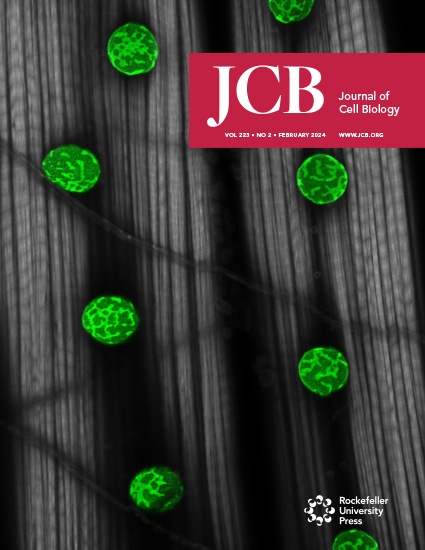FGFR2 residence in primary cilia is necessary for epithelial cell signaling.
IF 7.4
1区 生物学
Q1 CELL BIOLOGY
引用次数: 0
Abstract
Primary cilium projects from cells to provide a communication platform with neighboring cells and the surrounding environment. This is ensured by the selective entry of membrane receptors and signaling molecules, producing fine-tuned and effective responses to the extracellular cues. In this study, we focused on one family of signaling molecules, the fibroblast growth factor receptors (FGFRs), their residence within cilia, and its role in FGFR signaling. We show that FGFR1 and FGFR2, but not FGFR3 and FGFR4, localize to primary cilia of the developing mouse tissues and in vitro cells. For FGFR2, we demonstrate that the ciliary residence is necessary for its signaling and expression of target morphogenic genes. We also show that the pathogenic FGFR2 variants have minimal cilium presence, which can be rescued for the p.P253R variant associated with the Apert syndrome by using the RLY-4008 kinase inhibitor. Finally, we determine the molecular regulators of FGFR2 trafficking to cilia, including IFT144, BBS1, and the conserved T429V430 motif within FGFR2.FGFR2在初级纤毛中的驻留是上皮细胞信号传导所必需的。
初级纤毛从细胞中伸出,提供与邻近细胞和周围环境的交流平台。这是通过膜受体和信号分子的选择性进入,对细胞外信号产生微调和有效的反应来确保的。在这项研究中,我们重点研究了一个信号分子家族,成纤维细胞生长因子受体(FGFRs),它们在纤毛中的驻留,及其在FGFR信号传导中的作用。我们发现FGFR1和FGFR2,而不是FGFR3和FGFR4,定位于发育中的小鼠组织和体外细胞的原代纤毛。对于FGFR2,我们证明了纤毛驻留对于其信号传导和目标形态发生基因的表达是必要的。我们还表明,致病性FGFR2变体具有最小的纤毛存在,可以通过使用RLY-4008激酶抑制剂来挽救与Apert综合征相关的p.P253R变体。最后,我们确定了FGFR2向纤毛运输的分子调控因子,包括IFT144、BBS1和FGFR2中保守的T429V430基序。
本文章由计算机程序翻译,如有差异,请以英文原文为准。
求助全文
约1分钟内获得全文
求助全文
来源期刊

Journal of Cell Biology
生物-细胞生物学
CiteScore
12.60
自引率
2.60%
发文量
213
审稿时长
1 months
期刊介绍:
The Journal of Cell Biology (JCB) is a comprehensive journal dedicated to publishing original discoveries across all realms of cell biology. We invite papers presenting novel cellular or molecular advancements in various domains of basic cell biology, along with applied cell biology research in diverse systems such as immunology, neurobiology, metabolism, virology, developmental biology, and plant biology. We enthusiastically welcome submissions showcasing significant findings of interest to cell biologists, irrespective of the experimental approach.
 求助内容:
求助内容: 应助结果提醒方式:
应助结果提醒方式:


